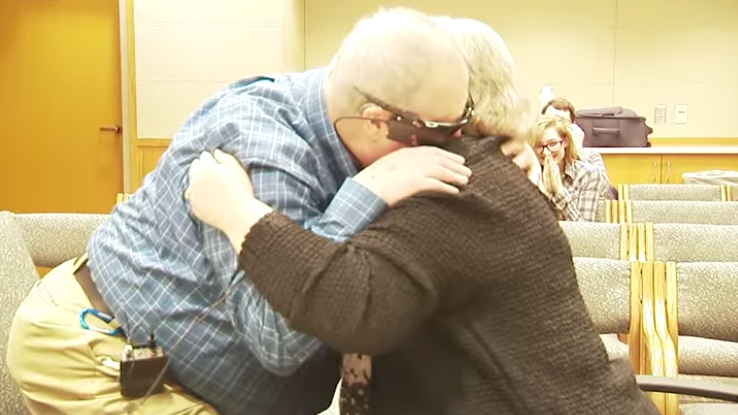Allen Zderad had no trouble picking out his wife in a room full of people, despite a decade of blindness.
“It’s easy…she’s the most beautiful one in the room.”
Allen, 68, has retinitis pigmentosa, a degenerative eye disease that affects the retina. There’s no cure and no good treatment, and when Allen started having vision problems nearly two decades ago, he had to make major adjustments, even leaving his job.
He was happy enough — but unable to see his family, including his wife Carmen and their 10 grandchildren.
One of those kids, Allen’s grandson, has early stages of the same condition, and has been working with Dr. Raymond Iezzi, a Mayo Clinic researcher and ophthalmologist. Dr. Iezzi asked to see Allen.
When the two men met, it was clear that Allen was a perfect candidate for the first clinical trial in Minnesota involving a bionic eye implant. It send light wave signals to the optic nerve, essentially going around the damaged retina and allowing patients to see. In January, Allen received the tiny chip in his right eye and then two weeks later, doctors hooked it to a special set of glasses that connected to the device.
Previously only able to see some light in his damaged eyes, Allen was able to make out human forms, outlines of objects and even his wife. The two broke into tears when he reached for her hands.

Dr. Iezzi admits, it was emotional for him as well.
“This is great for this family. It’s also very unusual for a scientist like me to be able to actually apply outcomes of what we’ve worked on for years to help a patient. That’s very special.”
Allen, who is just the 15th person in the United States to receive this implant, will continue to use the device, created by Second Sight, Inc. He’ll need a lot of physical therapy and instruction. He’ll never be able to see detail of faces or images but the device will allow him to go back to a more normal lifestyle.

